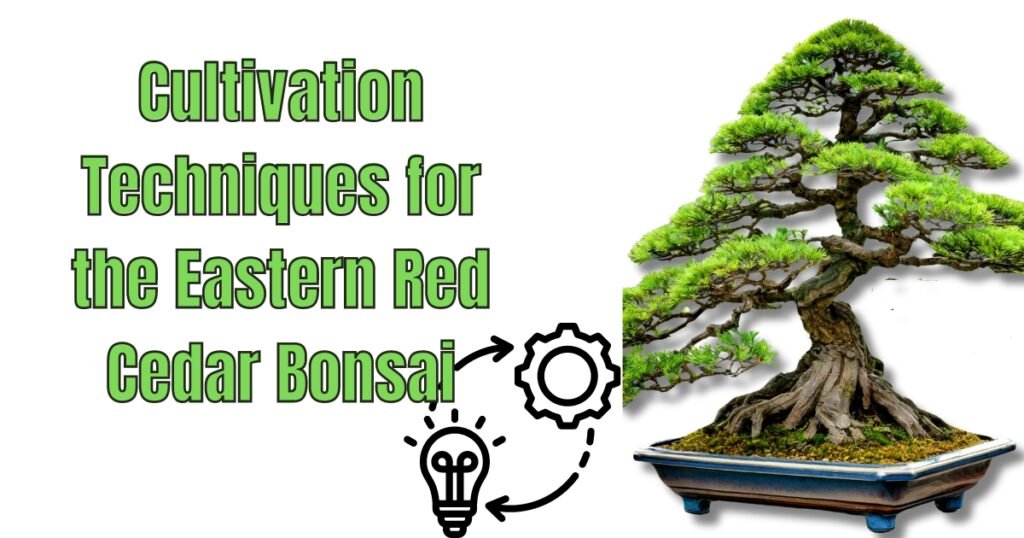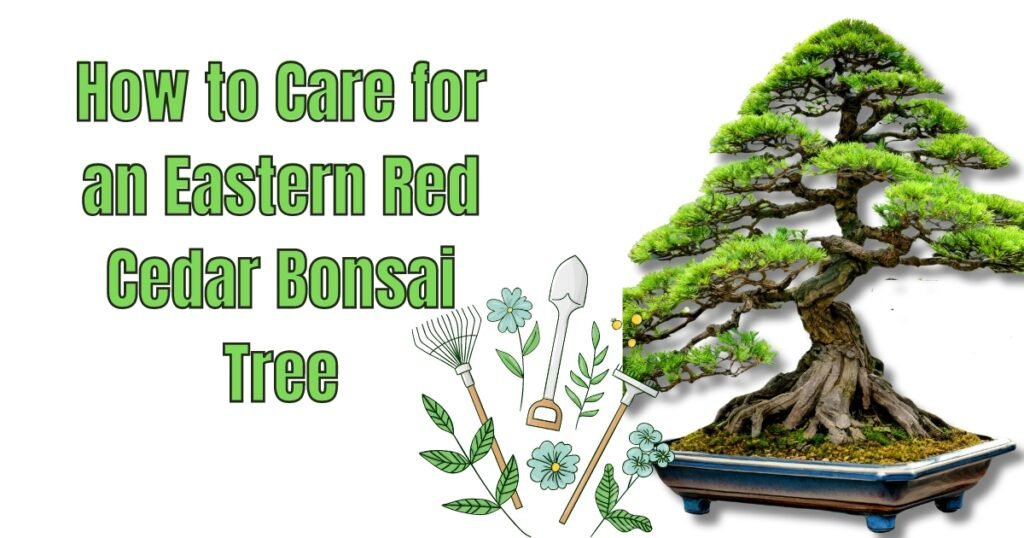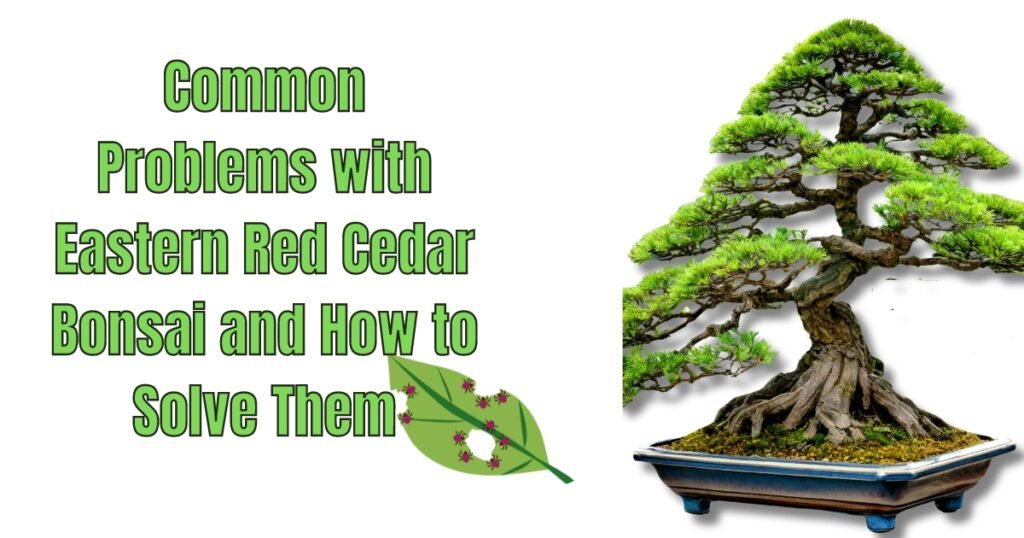General Information
Eastern Red Cedar, or Juniperus virginiana, is a coniferous evergreen tree native to eastern North America. It is a slow-growing tree that can be transformed into a beautiful bonsai with careful and patient cultivation.
Eastern Red Cedar bonsais should be kept outside throughout the year and require a relaxed or cold environment for around three months during winter to stay healthy. They are tall with red-toned, peeling bark that adds to their impressive bonsai appearance.
Shaping the trunk of this type of Bonsai is a challenge as it grows straight up. Regular pruning is necessary to maintain its shape due to fast-growing foliage.
Despite its challenges, the Eastern Red Cedar is an excellent bonsai option. It is hardy and can grow in various conditions, making it ideal for beginners and experienced bonsai enthusiasts.
Cultivation Techniques for the Eastern Red Cedar Bonsai
Did you know that the Eastern Red Cedar (Juniperus virginiana) is an excellent option for bonsai lovers? This unique and resilient tree has a unique look, making it a popular choice. However, taking care of it requires specific techniques to help it thrive.

Fertilizing: Add slow-release, pellet-based fertilizer every 1-2 months during the growing season to provide necessary nutrients for tree growth.
Pruning & Trimming: To keep the Eastern Red Cedar bonsai healthy and in good shape, it’s crucial to prune it regularly. Remove any diseased, damaged, or dead branches as soon as possible. Proper management is necessary to prevent the foliage from growing out of control.
Sunlight: Bonsai needs at least 6 hours of indirect sunlight daily, but avoid exposure to direct sunlight as it may damage the leaves.
Specialist Techniques: Bonsai trees often require specialized techniques to achieve compact foliage, but their long branching and habits are typically retained in the bonsai form, according to some enthusiasts.
Styling: Red cedar can be trained early on for most bonsai styles, but multiple-trunk styles may require planting multiple trees nearby.
How to Care for an Eastern Red Cedar Bonsai Tree
Did you know that the Eastern Red Cedar (Juniperus virginiana) can make a gorgeous bonsai tree with little love and attention? If you’re interested in learning how to care for one, I’ve got a detailed guide to help you!

Light Requirements
For optimal growth, Eastern Red Cedar bonsais require at least 4-6 hours of total sun exposure daily. They can tolerate partial shade but thrive best in bright light.
Watering
To ensure an Eastern Red Cedar bonsai’s healthy growth, you must be careful with its watering needs. Factors like pot size and climate affect the watering frequency. Always check the soil moisture level before watering and avoid overwatering or underwatering.
Fertilizing
Fertilize your Eastern Red Cedar bonsai every two weeks with a balanced, slow-release fertilizer during the growing season (spring to early autumn). In the dormant period (late autumn to early spring), reduce fertilizing to once a month.
Pruning and Trimming
Prune your bonsai regularly to maintain its shape and health. Trim new growth and remove any dead or diseased branches promptly.
Repotting
For your Eastern Red Cedar bonsai, repot every 2-3 years in early spring. Prune the roots and use a well-draining bonsai soil mix.
Winter Care
The Eastern Red Cedar bonsai can survive in temperatures as low as -30 degrees Fahrenheit but requires protection during harsh winter weather.
Pests and Diseases
Check your bonsai often for pests and diseases like spider mites, aphids, and fungal infections. Use the right pesticide or fungicide to treat any problems immediately.
Training
The ideal time for wiring and shaping is late winter to early spring, before the start of the growing season.
Common Problems with Eastern Red Cedar Bonsai and How to Solve Them
Suppose you care for an Eastern Red Cedar bonsai (Juniperus virginiana). In that case, it’s essential to be aware of common issues arising during its growth and maintenance. I’ve gathered some of the most commonly reported problems so you can be prepared and help your bonsai thrive!

- Spindly Branching: Shaping Eastern Red Cedar into a bonsai form can be frustrating due to its thin and spindly branches. This makes cultivating a bonsai from this species a lengthy process.
- Solution: Regularly use pruning and wiring techniques to control and guide branch growth. Remember to be patient.
- Slowly Healing Wounds: Eastern Red Cedar, like other Cedrus family members, has slow wound healing, which can lead to noticeable cut marks when branches are pruned or removed.
- Solution: Avoid unsightly cuts by incorporating deadwood features such as jins or small sharis.
- Susceptibility to Fungal Infections: Eastern Red Cedar is susceptible to fungal infections such as cedar-apple rust and other rust diseases. Signs of infection may include browned and dropping needles, primarily on older inner needles, tip and twig dieback, and dead branches.
- Solution: To manage fungal infections, monitoring them regularly and treating them promptly with a suitable fungicide is essential.
- Pests: Eastern Red Cedars can be vulnerable to bagworms despite generally having few pest issues.
- Solution: To keep your bonsai healthy, inspect it regularly for pests and treat it promptly with an appropriate pesticide.
- Mold/Fungus Due to Wet Foliage: If the foliage of the Eastern Red Cedar stays wet for long periods, it is vulnerable to mold and fungus.
- Solution: To keep your bonsai healthy, make sure it’s not overwatered and is placed in a well-ventilated area where the foliage can dry adequately.
Conclusion
Cultivating Eastern Red Cedar bonsai trees requires knowledge, patience, and attention to detail. Advanced wiring, indoor growing, and digital monitoring tools are emerging trends. Community forums offer shared knowledge and experiences. Care involves understanding sunlight, temperature, watering, soil mixtures, pruning, repotting, feeding, and pest management. Propagation methods include cuttings and layering. Cultivating Eastern Red Cedar bonsai trees is rewarding. Remember, it’s about the process, not just the result.
FAQs
What pests and diseases can affect my Eastern Red Cedar bonsai?
Spider mites, aphids, needle miners, and webworms are common pests that can affect your Eastern Red Cedar bonsai as per the details in Document 4.
What is the best soil for Eastern Red Cedar bonsai?
The Juniperus virginiana Bonsai Tree Care Guide recommends well-draining soil with good aeration. A mixture of 60% soil, 10% peat, and 30% coarse sand is often suggested.
How often should I water my Eastern Red Cedar bonsai?
Watering needs depend on several factors including the size of the tree, the size of the pot, temperature, humidity, and more. The Red Cedar Juniper Bonsai Care guide suggests using the “chopstick method” to assess the water requirement.
Can I grow my Eastern Red Cedar bonsai indoors?
Yes, you can grow your bonsai indoors. However, it will require careful management of lighting and temperature requirements as detailed in the guide on growing a Red Cedar Juniper Bonsai indoors.
What are some common issues with Eastern Red Cedar bonsai?
Common issues include overwatering, under-watering, insufficient light, and infestation by pests. Regular care and monitoring can prevent most of these issues.
Further Reading and Resources
- The Revolutionary Practice of Hydroponic Bonsai: A Comprehensive Guide
- The Art and Science of Cultivating Honey Locust Bonsai: A Comprehensive Guide
- The Asparagus Fern Bonsai: A Unique Blend of Art and Horticulture
- Mastering Plumeria Bonsai: A Comprehensive Guide to Growing, Pruning, and Caring
- Mastering the Art of Tiger Bark Ficus Bonsai: A Comprehensive Guide
- Mastering the Art of Bougainvillea Bonsai Tree Care: An Ultimate Guide





